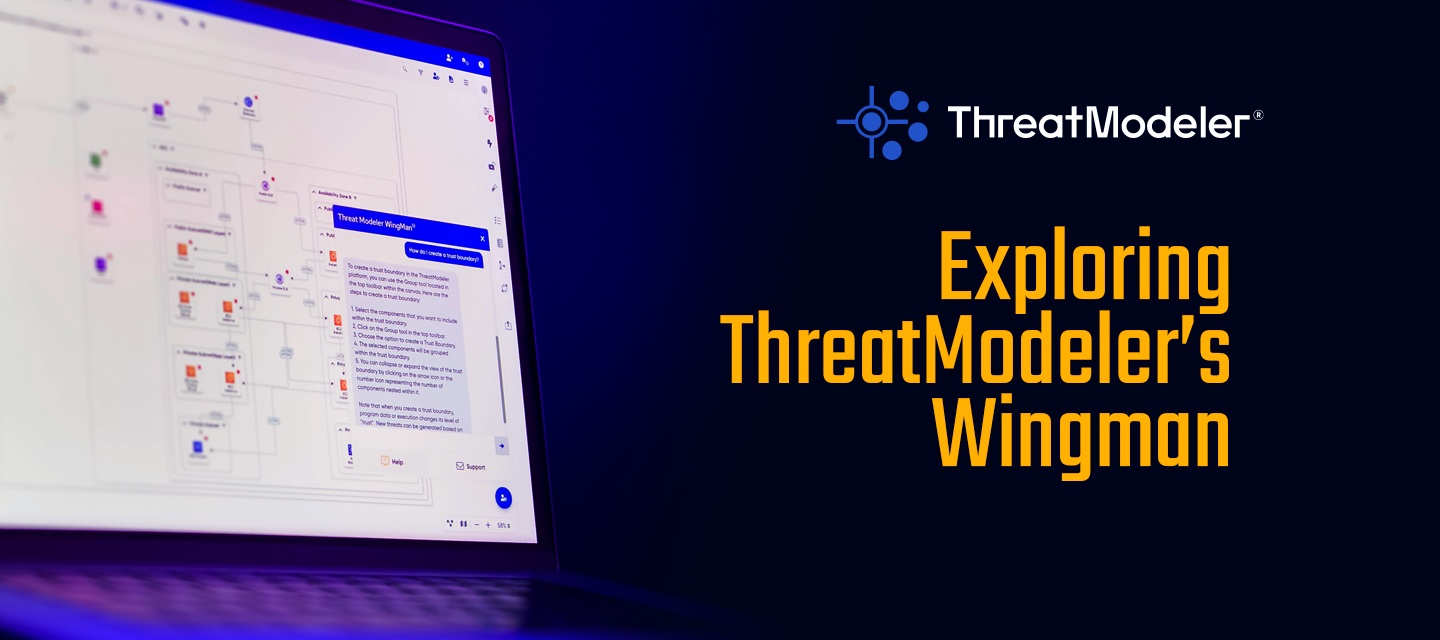Cyber security is an ever-changing battleground and remaining one step ahead of the threat is essential for companies looking to protect their digital assets effectively.
Recently, ThreatModeler, the pioneer of automated threat modeling, launched groundbreaking ThreatModeler Version 7.0. With this significant upgrade, a wide array of new features has been added to ThreatModeler. With the spotlight on ThreatModeler WingMan™, an innovative AI assistant designed to streamline the threat modeling process for software security and DevOps teams.
ThreatModeler 7.0: Unveiling a New Era in Threat Modeling
With the release of ThreatModeler 7.0, organizations can now have faster and more consistent threat modeling. The platform integrates intelligent embedded machine learning and AI, offering increased real-time collaboration, customizable risk analysis, and a suite of enterprise-grade features tailored for complex multi-tier environments and large developer and security teams.
The Vision Behind ThreatModeler WingMan™:
At the core of ThreatModeler 7.0 is the revolutionary ThreatModeler WingMan™ – an AI assistant embedded directly into the ThreatModeler platform. The vision behind WingMan is to realize the concept of "one-click" threat modeling. This makes the process more user-friendly and efficient. By integrating AI directly into the toolset, ThreatModeler aims to empower developers and security teams. The aim is that even those with limited security knowledge, can seamlessly incorporate security measures at the design phase.
Advantages of AI Integration in Threat Modeling:
The integration of artificial intelligence into threat modeling processes signifies a paradigm shift in how organizations approach security. ThreatModeler WingMan™ leverages a patented rules engine and learning module, allowing for organizational customizations. The primary advantages of this integration include:
- Simplified Diagramming: WingMan utilizes probabilities and the dynamics of the application being modeled, making diagramming more intuitive. Developers and security teams can spend less time on the modeling process, freeing up resources for strategic security analysis and process development.
- Real-time Collaboration: ThreatModeler 7.0, with WingMan, facilitates real-time collaboration among development and security teams. Teams can work seamlessly to review and address the findings of the model, fostering a collaborative approach to security.
- Contextual Help and Support: WingMan offers intelligent help through natural language processing, providing users with contextual help and access to support documentation during the threat model design process. Users can enhance their security knowledge and productivity without the need to raise tickets.
Key Features and Capabilities of ThreatModeler WingMan™:
- Diagram Suggestions: WingMan provides suggestions for threat model diagrams, parent groups, next component recommendations, and protocol recommendations. It enhances the user experience by automating the suggestion process based on thousands of models or organizational custom components.
- Intelligent Component Suggestions: As users build threat model diagrams, WingMan automatically suggests additional components based on the analysis of existing models or custom components within the organization. ThreatModeler WingMan™ consistently recommends additional components for your canvas, adapting to the changing context.
- Intelligent Path Analysis: WingMan's Intelligent Path Analysis suggests appropriate trust boundary settings, logical containers for components, and recommended protocols for connections between components. It identifies where to place security controls and how they can mitigate specific threats, offering comprehensive path analysis capabilities.
- Ticket Submission: WingMan supports ticket submission directly from the main screen, allowing users to raise and monitor service tickets related to support issues. It seamlessly integrates into the toolchain, streamlining communication between development, security, and DevSecOps teams.
In conclusion, ThreatModeler Version 7.0, with the introduction of ThreatModeler WingMan™, marks a significant leap forward in the realm of threat modeling and cybersecurity. The integration of AI into the threat modeling process not only simplifies the traditionally complex task but also empowers development and security teams to work collaboratively towards creating secure-by-design principles.
With ThreatModeler WingMan™, organizations can now achieve unprecedented levels of scalability, automation, and integration, building over 100,000 threat models with more than 10,000 concurrent users. The vision of "one-click" threat modeling is no longer a distant goal but a tangible reality, making security more accessible to all, irrespective of their level of expertise.
As the cybersecurity landscape continues to evolve, ThreatModeler's commitment to innovation ensures that organizations are well-equipped to navigate the challenges of securing cloud infrastructure from design to code to cloud. ThreatModeler 7.0, with WingMan, is not just an upgrade – it's a revolutionary step towards a more secure digital future. Embrace the power of AI in threat modeling, and let ThreatModeler be your virtual security assistant in the journey towards unparalleled cyber resilience.


